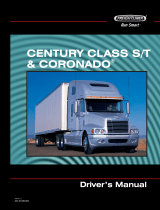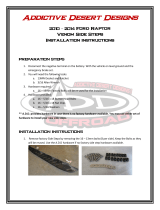Toyota 4Runner: Your rugged and versatile SUV companion. Conquer any terrain with its advanced four-wheel drive system, ensuring exceptional traction and stability on challenging off-road adventures. Tackle steep inclines and slippery surfaces with hill-start assist and downhill assist control, maintaining a steady pace and preventing rollback. Cruise confidently on highways with the smooth-shifting automatic transmission and enjoy the convenience of the cruise control system for effortless long-distance journeys.
Toyota 4Runner: Your rugged and versatile SUV companion. Conquer any terrain with its advanced four-wheel drive system, ensuring exceptional traction and stability on challenging off-road adventures. Tackle steep inclines and slippery surfaces with hill-start assist and downhill assist control, maintaining a steady pace and preventing rollback. Cruise confidently on highways with the smooth-shifting automatic transmission and enjoy the convenience of the cruise control system for effortless long-distance journeys.




















-
 1
1
-
 2
2
-
 3
3
-
 4
4
-
 5
5
-
 6
6
-
 7
7
-
 8
8
-
 9
9
-
 10
10
-
 11
11
-
 12
12
-
 13
13
-
 14
14
-
 15
15
-
 16
16
-
 17
17
-
 18
18
-
 19
19
-
 20
20
Toyota 4Runner: Your rugged and versatile SUV companion. Conquer any terrain with its advanced four-wheel drive system, ensuring exceptional traction and stability on challenging off-road adventures. Tackle steep inclines and slippery surfaces with hill-start assist and downhill assist control, maintaining a steady pace and preventing rollback. Cruise confidently on highways with the smooth-shifting automatic transmission and enjoy the convenience of the cruise control system for effortless long-distance journeys.
Ask a question and I''ll find the answer in the document
Finding information in a document is now easier with AI
Related papers
Other documents
-
Hyundai Veloster N Driving Manual
-
Suzuki GRAND VITARA 08 Operating instructions
-
Nissan 1999 Frontier Owner's manual
-
Nissan 2006 Xterra Owner's manual
-
 freightliner CORONADO Driver Manual
freightliner CORONADO Driver Manual
-
Eaton UltraShift PLUS Quick Reference Manual
-
Eaton UltraShift PLUS Instructions Quick Reference Manual
-
 Addictive Desert Designs Venom Side Steps Installation guide
Addictive Desert Designs Venom Side Steps Installation guide
-
Eaton UltraShift PLUS FO(M) E310C-LAS Series Instructions Manual





















